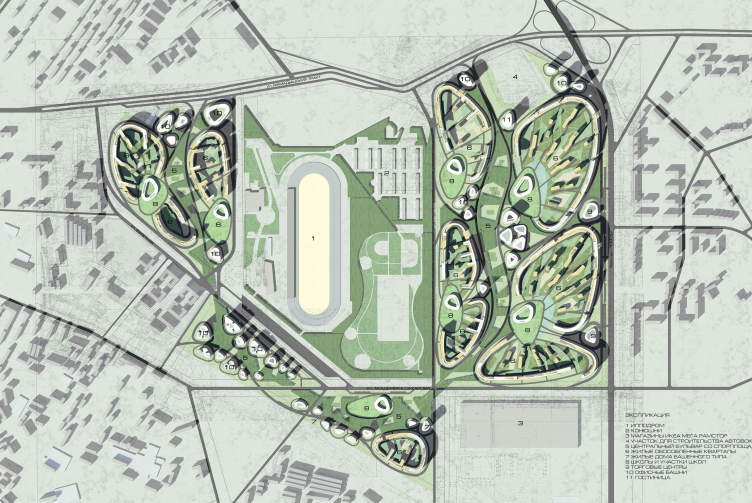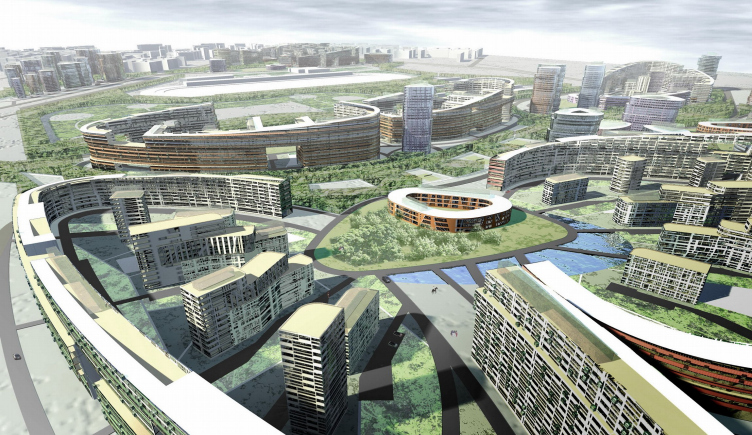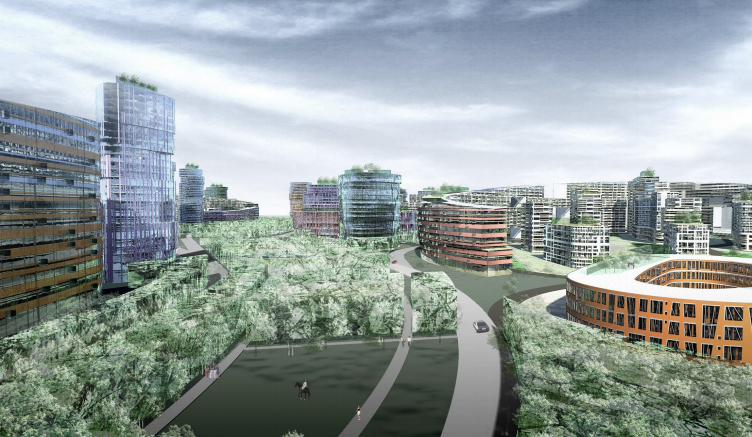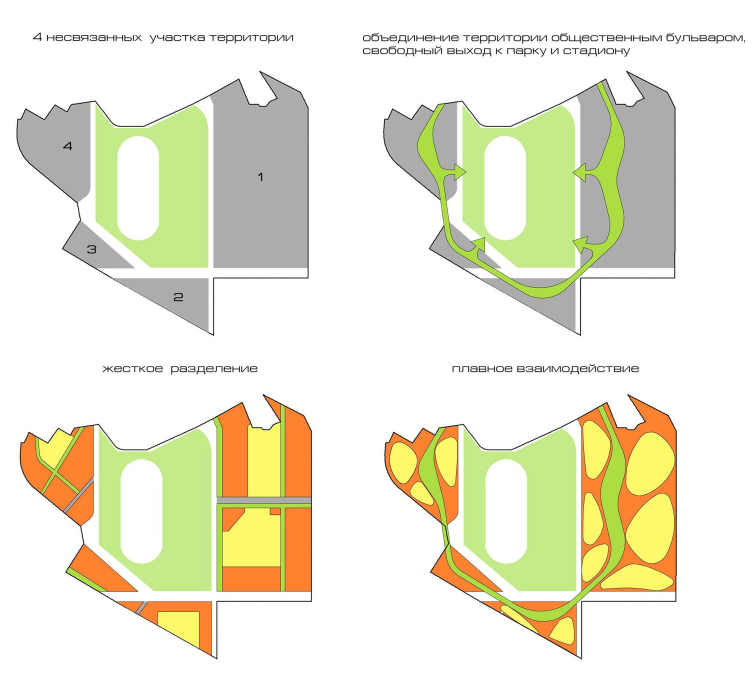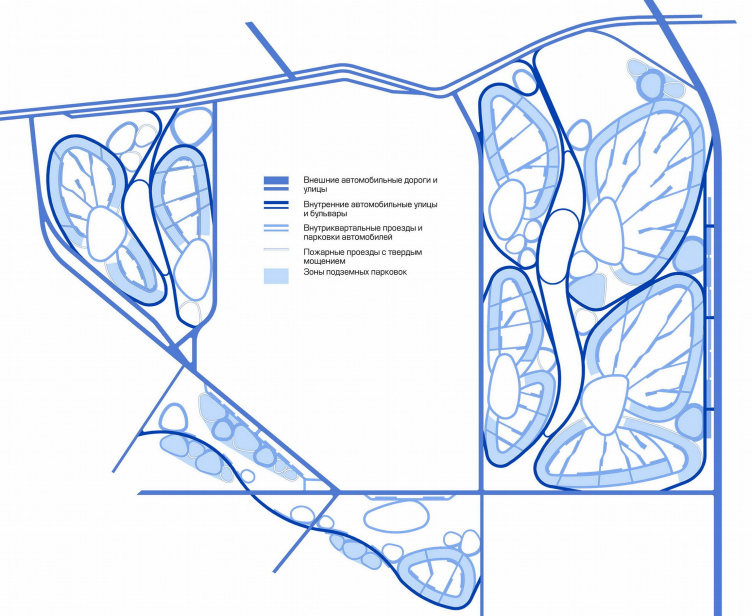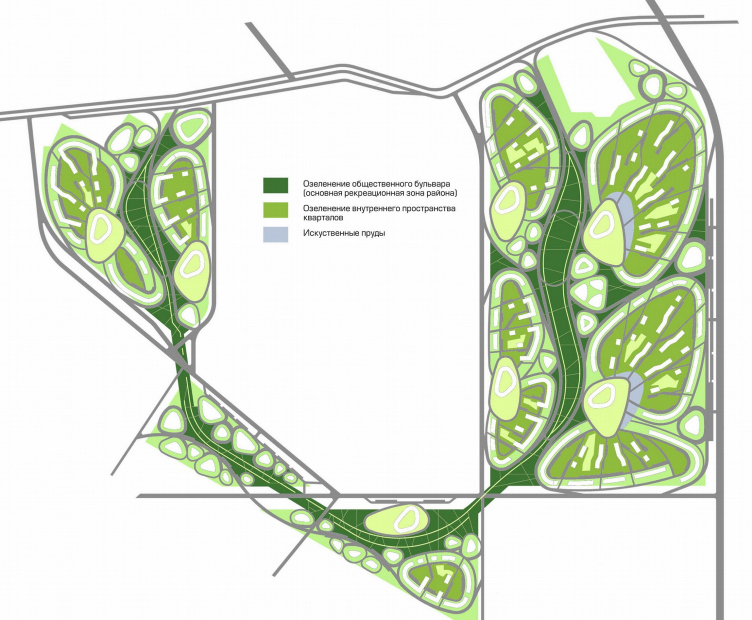In the 20th century when cities became very large, it also became very popular to consider them as a kind of living organism – a tree, or something else. Quite considerable part here played Wright’s theory of organic architecture. It is topical today as well: areas are bodies, city blocks are cells, each has its own function, and together they form a single whole – city space.
A. Asadov’s studio in one of its recent projects presented layout of such kind for area in Kazan – it is a living city tissue which consists of ameba-like formations which are thread on a semicircular green avenue like beads thread on line of a necklace. It is all about the contest project of the area layout in the place of former city airdrome in Kazan, clients gave it the name “Sedmoe nebo” [the Seventh Sky] giving tribute to "heavenly" spirit of the place.
A few years ago there was constructed a sports complex with a hippodrome on the field of airdrome with a park around. The future block was to be placed around the hippodrome as independent city blocks (residential and office), located on a significant distance from each other. Following the set requirements, architects of A. Asadov's studio came to the following planning concept: from the three sides along the hippodrome there would be a green avenue with adjusted city blocks, this would gather the development scattered in space of park into the single town-planning solution.
Idea of the final concept of the city block’s layout was not found at once. Architects had a task of formation of city environment of new generation, and, according to the head of the studio Andrey Asadov “it was important not to apply straight-line form of development, rigid geometrical city blocks”. First, there was an idea of “cluster” city blocks, fragments of compact urban development. Then the architects suggested radial layout which would "scatter" in different ways from the central park. There was a variant to build city blocks as a "ridge" along the central avenue, and a variant to imitate curved streets of an old city. But the architects refused all these ideas because of their linearity – there was nothing common with the concept of a modern city.
The final idea came unexpectedly – one of the co-authors of the project had a dream, just like Mendeleev saw his periodical table of chemical elements. The idea rests in free-floating "cells" in the urban space – city block formations, “sprouted” out of both sides to the arch of the central avenue. Each "cell" has an environment – curved house which outlines the city block along perimeter, within there in centripetal order other houses are located. In the “core” of the cell-like city block there is its public area - a school, height of the development goes down to the core and at the same time to the avenue, this visually draws the city block developments to the central axis.
Cell-like character of the layout was chosen by the architects only for residential blocks. Solution for business areas was simpler but no less expressive. The authors applied typology of garden-city by Le Corbusier to it, placing office towers of streamline forms and different sizes and diameters in chaotic order. They as well go down in direction to the central green avenue, taking part in creation of the uniform architectural composition.
As a whole the contest project “the Seventh Sky” is the synthesis of previous architectural projects of A. Asadov’s studio, projects “Circles on water” in Domodedovo and countryside settlement "Pearl" on Novorizhsky highway. In comparison with these works in the new project circles transform into more complex, curved and flowing forms with intricate inner structure similar to layout of "Pearl", but in different scale – in scale of the city. Here architects tried to apply their urban-planning solutions for larger territory – they designed a version of urban environment similar to fragment of a living organism. The expected result was the ability of this environment for self-development in the future.
P.S. Results of the contest “the Seventh sky” on development of the field of airdrome in Kazan were not announced, the contest was canceled.






